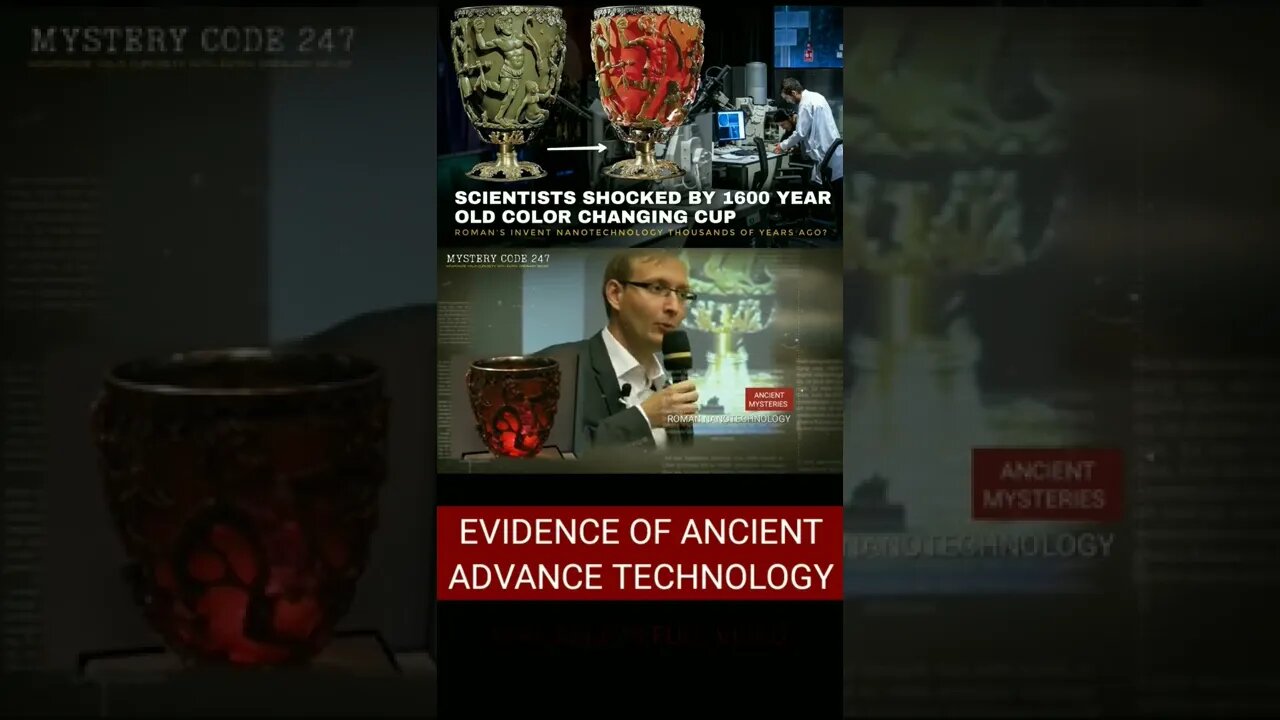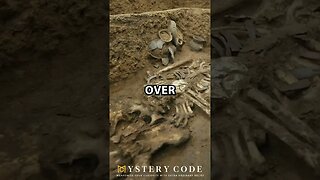Premium Only Content

1600 Years Old Color Changing Cup |Advance Technology
It's interesting that no one knows why the Lycurgus Cup was designed to change color when lighted. Was there a ritual involved? Was it a ruler's tool for detecting poison? Was it only to exhibit light and color so exquisitely?
Engineer Gang Logan Liu from the University of Illinois at Urbana-Champaign believes there is a benefit to investigating this object and its technology. He has been concentrating on how to diagnose and treat diseases using nanotechnology. Liu claims that the Romans were skilled in creating and utilizing nanoparticles for exquisite art. We were interested in exploring any potential scientific uses for this. Liu postulated that when a treated vessel was filled with various liquids, the vibrating electrons would change the color of the glass accordingly. The Lycurgus Cup couldn't be used in the experiment for fear of damage. Instead, the researchers
"...created an array of billions of incredibly small Lycurgus Cups by imprinting countless tiny wells onto a plastic plate the size of a postage stamp and dousing them with gold or silver nanoparticles. The wells showed a variety of easily distinguishable colors when water, oil, sugar solutions, and salt solutions were put into them, such as light green for water and red for oil. The prototype's sensitivity to changed salt levels in solution was 100 times greater than that of comparable commercial sensors now on the market.
Therefore, a technology created 1,600 years ago has the potential to be used today. It raises the question of what nanotechnology actually is. Is this science insanity? A revolution in atomic engineering? the two?
In essence, nanotechnology involves controlling systems and processes at the atomic scale—a world so tiny that it is beyond the comprehension of non-scientists. The word "nanotechnology" is a Greek word that means "dwarf." What kind of scale are we referring to? "A nanometre is a very small unit of measurement that is one billionth (10-9) of a meter in length, or around 100,000th of the breadth of a human hair.
The last 20 years have seen a development in nanotechnology. A substantial effort is currently being made to develop applications for the research's continuous usage. Nanobots have the potential to locate and eliminate cancer cells. Modern surgical instruments, diagnostic methods, and medication delivery systems have the potential to change medicine. Nanotechnology has promise for antiterrorism programs since it can swiftly ascertain the make-up of unidentified liquids, chemicals, and substances to stop assaults.
-
 0:52
0:52
MindSet Code Ph
2 years ago $0.08 earnedThe ancient mysteries, Hidden Cave Under the Mountain
776 -
 1:09:42
1:09:42
Mike Rowe
7 days agoHow Did THIS Dirty Job Make Tommy Mello A Billionaire?! | #447 | The Way I Heard It
88.6K20 -
 2:01:37
2:01:37
MG Show
18 hours agoTrump Says Soros Should be Charged with RICO; Bill Gates Pulls Out of Arabella Advisors
12.9K26 -
 1:19:55
1:19:55
TruthStream with Joe and Scott
1 day agoLisa, Michelle and Carole join Joe for Healing and Inspiration. Next healing will be on Aug 28th at Noon and 4pm eastern https://www.balancingbodyandsoul.com/?ref=TRUTHSTREAMSHOW
3.54K1 -
 1:14:00
1:14:00
Steve-O's Wild Ride! Podcast
6 days ago $1.88 earnedLilly Singh Talks S*x Education With Steve-O | Wild Ride #264
17.7K3 -
 52:48
52:48
Futures Edge: Finance Unfiltered with Jim Iuorio and Bob Iaccino
1 day ago $1.34 earnedTrump’s Latest Initiatives Explained
18.9K -
 4:36:31
4:36:31
FreshandFit
9 hours agoAfter Hours w/ Girls
69.8K112 -
 2:04:11
2:04:11
Side Scrollers Podcast
18 hours agoCracker Barrel CANCELS Rebrand + OG YouTuber Has Brain Tumor + More | Side Scrollers IN STUDIO
33.1K5 -
 19:26
19:26
GritsGG
10 hours agoChat Picked My Hair Color! All Pink Loadout & Operator Challenge!
9.99K3 -
 1:27:34
1:27:34
TruthStream with Joe and Scott
3 days agoArchitect Richard Gage: 911 truths and more #482
16.3K3